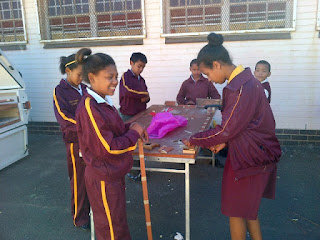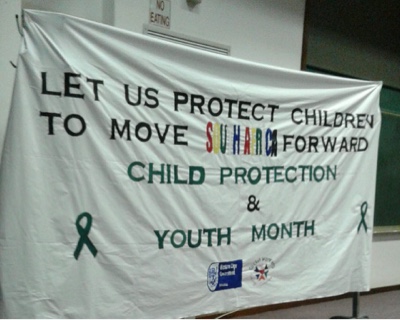Lavender Hill High School and Sullivan Primary School caught treating our learners like the Einsteins of the future.
The schools I serve inspire me beyond words.
Take the Lavender Hill High School Awards ceremony, a spectacular display of ‘vision-in-action’. For this event 85 learners and their parents were transported via taxi service from their drab Lavender Hill area to a classy conference centre in Ottery, about 10 kilometres from their homes. The timing, location and setting were calculated decisions by the Lavender Hill High staff. The celebration of excellence is not time-bound and thus there is no reason to treat awards ceremonies as end of year events. Secondly, if learner excellence is going to be acknowledged, then it makes sense to mirror the excellence in both venue and setting. Subliminally, this is what the school achieved by hosting the Awards ceremony at a conference centre kitted out with lavender-themed elegant décor and matched with seamless, professional proceedings. How powerful is this!
 |
| Sullivan's school grounds become a technology-science labarotary |
The second example is Sullivan Primary School. While Sullivan’s Head, Ernest Moore and I were reflecting on his performance for the year, the staff were engaged in a professional development facilitated by a colleague. Interesting too, was that a group of learners was busy learning how to construct a desk lamp by applying Maths, Science and technology content and skills. These future economy builders are applying their content in a real life setting with the help of Russel, their facilitator. There is a spirit of comraderie and animated activity in the air.
.JPG) |
| Proud Head of Sullivan, Ernest Moore watching Russel and Sullivan learners putting Maths, Science and Technology in action |
While watching the group of girls and boys creating their masterpieces, Ernest fills in the details. Russel is a volunteer who has raised his own sponsorship to run this outreach project with the learners. The interesting learning for the school and for Russel was that this group of budding entrepreneurs, scientists or mathematicians – in fact, any career they are dreaming of – was a mixed ability group. The learners were chosen for their performance or aptitude in Maths, Science and Technology. What the school had not bargained for was how the learners would create ideal learning conditions for themselves.
.JPG) |
| Sullivan learners busy constructing their desk lamps |
What Russel had noticed was that the learners adopted an inclusive, strength-based approach when they worked. In a spontaneous way, the stronger maths students mediated difficult abstract concepts for their peers, while those who were able to apply the scientific, technological skills, helped their less practically-orientated friends. Russel had just assumed that the group was a homogenous group of high academic achievers. He was even more in awe of his protégés when he realized how his initial belief in all the learners was positively flawed. Even during my interaction with the group, it became obvious that learners were applying collaborative learning instinctively. When they explained something to me about the process of designing and constructing their lamps, the learners filled the empty spaces left by their friends without any fanfare. I enjoyed this dance of learning and I could see the pride written on the faces of Ernest and Russel.
Such moments as described lift my soul and make me want to shout out that we can all learn and excel if our learning styles and aptitudes are accommodated and nurtured. More and more I realize that research in psychology indicates that we behave according to habits which we built up over the years. If we want to change our mindsets or the belief system of children to one that acknowledges their amazing talent and capacities, we have to train our thoughts and behave differently consistently until such behaviour becomes a habit. When these new habits set in, I think we will cause a revolution of sorts!
 |
| Russel demonstrating a concept to the learners |
Armed with this thinking, I would like to challenge all of us to follow the Lavender Hill and Sullivan model. Given that we really have nothing to lose, can we behave as if all our learners are gifted and then consistently, persistently create actions or situations where their gifts or talents will be sharpened and displayed 90% of the time? Can we do this? Are we bold enough to question our traditional thinking and our behaviour especially that which is negative towards our children? Shall we give it a shot?


Comments
Post a Comment